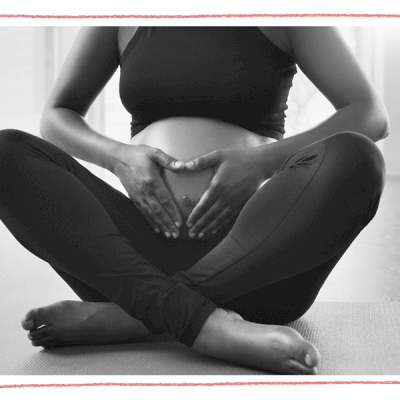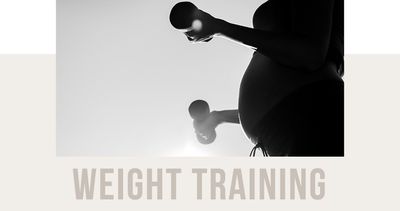
How To Exercise Safely During Pregnancy
Why is exercise important during pregnancy?
One of the biggest misconceptions is that exercise during pregnancy isn’t safe. While every pregnancy is different, for the majority of mums-to-be it’s actually really important to stay fit and active. Exercise has many great benefits; it can help you manage or alleviate pregnancy-related aches and pains, boost your energy levels and get your body in shape for labour, birth and beyond. In fact, research tells us women who exercise during pregnancy tend to recover faster than those who didn’t.
Great. But how much is too much?
As with all exercise undertaken during pregnancy, it’s important to remember you are not training for anything other than labour and recovery. That means reducing the intensity, especially when it comes to forms of exercise which cause your heart rate to rise. One way to see if you’re pushing yourself too hard is the “talk test”. If you can have a conversation while you're working out, then the intensity is fine. But if you find you are struggling to catch your breath, it’s time to take things down a notch.
Is there anything specific you need to consider?
Make sure you warm up properly and take the time to cool down when you finish. Drink lots of water throughout and have longer rest periods if necessary. Be kind to yourself and listen to your body – it’s okay not to exercise if you feel too tired. Finally, always speak to your doctor or midwife before starting any new form of exercise when you’re pregnant.

Swimming is one of the best and safest ways to exercise during pregnancy, especially as you approach full-term and your bump gets bigger. The water will help support the extra weight and you’ll also keep cool while you work out. Even if you didn’t swim before, as long as your pregnancy is going well, it's usually perfectly safe to start swimming once you find out you’re pregnant.
During The First Trimester…
If you were swimming before your pregnancy then you can continue as normal, but be aware you might feel more tired during your first trimester. You don’t need to keep up with the same amount of lengths or even spend the same amount of time in the pool if you’re low on energy. Just 15-30 minutes a few times a week is a great place to start.
During The Second & Third Trimester…
Your energy levels should start to pick up as you go into your second trimester and if you feel like swimming for longer, then go for it. Moving into your third trimester, you might start feeling more breathless as your bump gets bigger, so rest when you need to and remember to stay hydrated. There’s little risk of overheating while swimming, as most heated pools are kept around 30°C, but if you feel yourself getting too warm, stop for some more water before you continue.
What To Remember…
Some women start to experience pelvic girdle pain during their second trimester, which can be made worse by breaststroke. If you are experiencing any type of hip or pelvic pain, try a different stroke or an aqua-natal class, which are usually led by experienced midwives.

Provided you are enjoying a healthy pregnancy, if you ran beforehand, it’s okay to continue. It’s a great form of exercise, but it is high impact, so as your pregnancy progresses and your bump gets bigger it might not feel so comfortable. If at any point during your pregnancy complications arise, such as bleeding, placenta problems or pre-eclampsia, check with your healthcare provider before you start running again. If you weren’t a runner before, it’s probably not the best time to take it up. Instead, choose a low impact form of exercise like Pilates, yoga or swimming.
First Trimester…
Continuing to run in your first trimester is perfectly safe, as you won’t have too much extra weight to carry. However, you might feel tired or may not have the energy to run at all, so listen to your body and only run on the days you feel good. Always rest when you need to.
Second Trimester & Third Trimester…
As your energy increases in your second trimester, and assuming you have no joint or pelvic girdle pain, you can continue running at a pace that allows you to hold a conversation. Just try to eat something a couple of hours before you head out, or be sure to pack a light snack with you like a cereal bar or a couple of dates. Don’t run when it’s too hot, either, and stay well hydrated. You can always include periods of walking if you need to.
What To Remember…
Your body produces relaxin throughout your pregnancy, but production is at its highest during the first trimester. Relaxin makes all of your ligaments lax, which can increase your risk of injury, so it’s important to wear shoes that are right for your gait and help support your arch and posture. As your bump gets bigger, your centre of gravity also shifts and you can lose your balance more easily. This means you are at greater risk of falling, so walk if you need to, or try to run with your partner or a friend.

Weight training is great for developing strength and stamina, both of which you’ll need for labour and when you’re lugging around a car seat or pushchair. If you didn’t do any type of weight training before, it’s perfectly safe to start once you find out you’re pregnant. However, try to practice good form and technique, and get advice from a qualified personal trainer at your gym or by attending a pre-natal fitness class. If you don’t have access to any weights, resistance bands are a great alternative to use at home. The muscle groups you’ll want to focus on include the arms, back muscles, legs, glutes and your deep core muscles. Try exercises like squats, lunges, push ups and rows.
First Trimester…
Listen to your body and don’t overdo it. For instance, try a 30-minute workout instead of a 60-minute one and take longer rest periods. If you’re attending a class that involves weightlifting, tell the instructor you’re pregnant so they can make adjustments for you.
Second & Third Trimester…
From your second trimester onwards, make sure you are mindful of how much weight you are using. Remember, you should be able to have a conversation as you go through your reps, which might mean reducing the amount of weight you lift and extending your rest periods. From around 16 weeks, you want to avoid lying on your back for too long as this can cause issues with the baby’s circulation. It’s important to keep hydrated and exercise in a cool environment to avoid overheating.
What To Remember…
Try not to hold your breath when lifting weights as it could make you feel faint or dizzy. If you no longer feel confident using a barbell on your own, swap it for dumbbells or kettlebells. Just make sure you pick them up and put them down with proper form, so you don't hurt your lower back. If you have pelvic girdle pain, lunges or sumo squats can make your symptoms worse. You should also avoid doing full planks or push-ups, and drop down onto your knees to avoid putting any extra pressure on your core. Finally, try altering standing exercises like a shoulder press or tricep extensions by doing them sitting down.

Pilates is a great workout for pregnancy as it’s low impact and focuses on working those deeper core and pelvic floor muscles. It’s also a full body workout that will help you stay strong during pregnancy and prepare you for labour. If possible, try to find a pre-natal Pilates class, or make sure your instructor knows you are pregnant, so they can modify exercises as you go.
First, Second & Third Trimesters…
You can do Pilates throughout your pregnancy, but as things progress, there are certain movements that will have to be modified. As your centre of gravity shifts, your balance will be off, so standing on one leg for too long might be too difficult and you won’t be able to lie on your front, either.
What To Remember…
Some women experience wrist pain due to carpal tunnel syndrome, a hormone-related restriction of the nerves in your wrist. If this is the case, make sure your Pilates instructor knows so they can modify the exercises that require you to be on your hands and knees.

Yoga isn’t only a great way to keep active during pregnancy, it’s also useful to practice breathing techniques in preparation for labour. That said, many yoga poses aren't suitable during the later stages of pregnancy, so find a pre-natal yoga class or work with a yoga instructor who has experience working with pregnant clients so they can modify poses for you.
First Trimester…
If you have practiced yoga before, your pregnancy shouldn’t mean you have to alter too much during your first trimester. But if you feel more tired, listen to your body and be mindful of the length of class you choose to attend. Also, be aware of overstretching beyond your normal range of motion, as relaxin can make you more vulnerable to injury.
Second & Third Trimester…
At this stage it’s really important to attend a specific pre-natal yoga class, as there are many poses that won’t be safe as your bump grows. As your centre of gravity shifts, you might struggle with balancing poses, so practice these with a chair or near a wall. You’ll also want to avoid lying on your back for too long, or doing any backbends that could cause your abdominal muscles to overstretch. It goes without saying that handstands and headstands are a no-go. Your yoga teacher will likely focus on breathing and working your deeper abdominal and pelvic floor muscles to help prepare you for labour.
What To Remember…
Avoid yoga that takes place in heated rooms, like Bikram yoga. It’s not safe for you or the baby.
For more information on working out during pregnancy visit StrongForEveryday.Club
*Features published by SheerLuxe are not intended to treat, diagnose, cure or prevent any disease. Always seek the advice of your GP or another qualified healthcare provider for any questions you have regarding a medical condition, and before undertaking any diet, exercise or other health-related programmes.
DISCLAIMER: We endeavour to always credit the correct original source of every image we use. If you think a credit may be incorrect, please contact us at info@sheerluxe.com.


